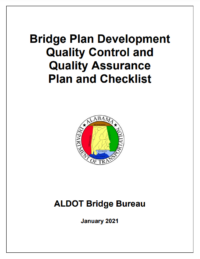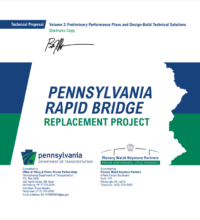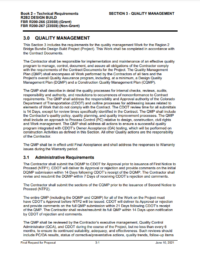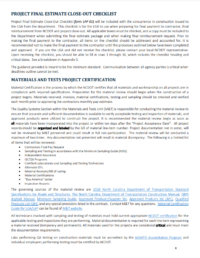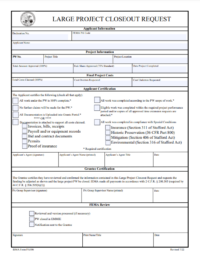Step 10: Conduct Quality assurance and Close-Out
Quality Assurance:
Quality Assurance (QA) encompasses the activities and actions taken to ensure project requirements are met. Conducting quality control activities promotes confidence that a product or facility will perform as it should, and that the quality of a product is what it should be.
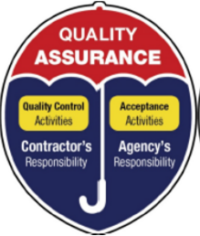
Image Source: FHWA
The categories of responsibilities are Quality Control (QC) activities performed by the contractor and acceptance activities performed by the agency. QA is done through standard practices, regardless of procurement method; however, according to Keith Molenaar of the University of Colorado, depending on the chosen procurement method, there may be additional external checks and additional ownership of responsibilities.
Quality Assurance for bundling is the same as it is for any single project. According to Mark Traynowicz, of Nebraska DOT, Quality Assurance, particularly for construction, it is often easier because the contractor bids who has done it before.
Quality Assurance Plans should include a checklist and reviews conducted to ensure quality control processes have been followed.
IDOT developed QC/QA Specifications for Hot Mix Asphalt Concrete; a plan that specifically outlines procedures to meet the needs of local agencies.
Additionally, IDOT is required to perform QA reviews of bridge inspection and load rating practices in accordance with the National Bridge Inspection Standards (NBIS).
IDOT prepares a Summary Report of its findings, selecting four counties for bridge inspection review, seven local agency bridges and three state bridges for load rating reviews.
Quality Management Plans (QMP) define processes and measures to ensure a project’s success and safety. Particularly, with bridge projects in rural areas, potential problems can be avoided and mitigated with a quality management process.
The Pennsylvania Rapid Bridge Replacement Program developed a Preliminary Quality Management Plan in its Technical Proposal.
Colorado DOT’s Region Two, Bridge Bundle Technical Requirements, Section 3 lays out Quality Management requirements and responsibilities for a Design Build project.
Close-Out:
After selecting a delivery method, conducting an environmental review, and evaluating preliminary design considerations, the project’s contract is then executed, and the project can then proceed to the design and construction phase. This process will be done to ensure an on time and on budget delivery, and achieving the goals that the jurisdictions involved established early on in the process. Once final completion has been reached, the close-out process begins.
When closing out a project, it is good practice to acknowledge those people and organizations who were critical to the project’s success. This close-out process includes documenting lessons learned and best practices, as well as reviewing performance metrics, updating processes and procedures, archiving project documents, and updating contract template documents in order to improve policies for future projects.
In addition to celebrating a successful project, counties, states, and local agencies may conduct an audit of the project and issue recommendations that can be useful to future projects.
